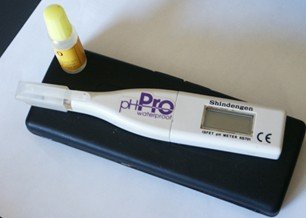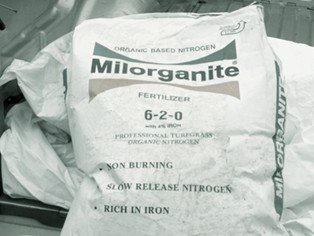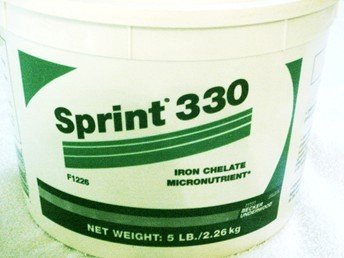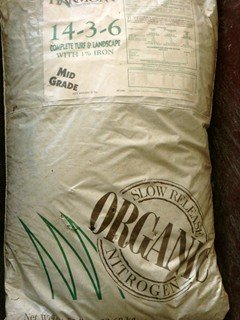The Soil Analysis Report
The soil analysis report should come in the mail about 10 days to 3 weeks after submitting the soil sample to be tested. For faster results, some labs are set up for viewing reports online. Check with the lab or extension office to see if they offer that service. Click here for easy instructions on how to collect a soil sample.
Understanding the soil analysis report can be difficult. The testing labs use industry terminology to describe the results without any explanation as to what the terms mean.
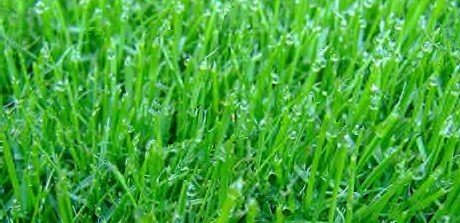
This page should give you a much better understanding of what is on a soil test sheet. You will probably still have a lot of questions, however. Most labs will provide a phone number or email to contact the lab supervisor. After reviewing this page you will be able to discuss the lab results more intelligently when you call. That is a big advantage.
What's on the Soil Analysis Report
Not all labs are equal. Some only give ball park figures and some are worse. Free state labs are not very good if you are looking for accurate information. Private labs can be better but you have to inquire about what is on the report and how accurate it is.
I talked to a lab director about the accuracy of his results (He had a PhD in this). His lab only gave ball park figures that could sometimes be way off. To me this seems a waste of an expensive education, but that is only my opinion. Most people are expecting better results and are not told it may not be accurate.
Cation Exchange Capacity (CEC)
The CEC is one of the first results you see on many soil analysis reports. It can be complicated and probably the hardest to understand, but is an important part of soil science.
It is not always included in the soil analysis, sometimes you have to pay extra for it. A very basic explanation is provided below, but a complete explanation is beyond the scope of this site. For more detailed information, you can click on this CEC Nutrient Management Explanation.
The CEC is a measure of 0 to 50 and 50 - 100.
0 - 3 is Pure Sand.
8 - 12 is sandy loam
15 - 20 Silt Loam
20 - 29 Sandy Clay Loam
20 - 30 Silty Clay Loam
30 - 40 Clay
50 - 100 Organic Soils
This is not a complete list of CEC soil types. It takes a soil composition test to get the soil type to fully measure the CEC. Different soils can cross over within the scale.
The CEC is a measure of your soil's capacity to hold nutrients; specifically, positively charged ions such as K, Ca, and Mg. Clay and organic matter are negatively charged and contribute to the cation exchange capacity.
The negative and positive charges attract each other like magnets, so soils with high CEC soils possess a higher negative charge and will retain nutrients better than low CEC soils. Sand can't hold many nutrients but Clay can. The results are then used to judge the potential fertility of a site. In short, the higher the CEC, the better the nutrient holding capability.
Soil analysis results denoting low CEC soils, such as sandy soil, will need the fertilization adjusted to deliver less fertilizer per application, but performed more times per year. Sandy soils don’t have as many negative charges to hold nutrients, so it will need to be approached a little differently.
Your local university extension office should be able to provide specific information about conditions in your area and help further explain the soil analysis report results.
Soil analysis "active pH" and "buffer pH" results
Soil pH is a very important result to understand in the soil analysis report. The soil pH scale is measured from 0-14. A reading of 7.0 is the middle of the scale and is considered to be "neutral". Anything below 7.0 is acidic and anything above 7.0 is basic or alkaline.
Now this is important. Each movement of one whole number on the pH scale represents a change by a factor of 10. For example, several months after liming you noticed the pH moved from 6 to 7 on the pH scale. The move from 6 to 7 means the soil is now 10 times less acidic than it was at 6. A movement from 5 to 7 means it is now 100 times less acidic than it was at 5.
The letters "pH" means "potential Hydrogen". The soil analysis will record two different pH tests. They include the active pH test and buffer pH test.
"Active" pH is the measure of hydrogen ions in the soil at the root zone. The more hydrogen that is present in the soil, the lower the pH number and the more acidic the soil is. The less hydrogen that is present translates to less acidity and a higher number on the pH scale. Active pH is the type measured with a home soil test kit.
The soil pH doesn't tell you anything about the soil composite or how much lime to apply. Unless you know already what the soil contains, all the soil pH will give you is the active pH. This will tell you that something may need to be done, but exactly how much lime is determined by other factors.
Not all kits are the same, so be sure the soil test kit you choose is able to test for all the things you need. The soil analysis of a home and garden soil test kit is generally not quite as accurate as a lab test.
For the serious gardener or lawn care enthusiasts, these small, professional pH meters are as accurate as lab tests for active pH. Price varies greatly, so shop around.
"Buffer" pH is performed in a lab and is the measure of the soil’s resistance to change. Simplified, it means that heavier soils that are high in organic matter or clay will require more lime to correct acidity problems than sandy soils would require with the same pH reading.
To explain further, a reading of 5 on the pH scale is the same for all types of soil. However, to correct the pH and bring it back to 7 would require differing amounts of lime depending on what elements are in the soil. That is what the buffer pH determines.
A home soil test kit doesn’t test for buffer pH.
The soil pH test will not give you any information on unavailable calcium or calcium saturation levels. It only tests for free hydrogen.
The only reason a soil test will give lime recommendations is to adjust the soil pH. No other reason. This means that the soil Ca Saturation may not be totally adjusted if much is needed. No more than 50 lbs per 1000 sq ft can be applied to grass at one application.
If soil pH is not far off, but the soil Ca saturation is low, Agri-Gro Calcium is needed. It will not markedly affect the soil pH but can raise the Ca Saturation due to the organic acids that breakdown unavailable calcium.
A couple important lawn care tips to consider: Before making pH corrections, make sure you know what pH range your plants grow best in.
Materials used for correcting pH problems
Material for correcting acidic soils
Agricultural limestone can be purchased in 50 lb bags at feed and farm stores and some lawn and garden stores. Limestone is used to make soils less acidic and bring the pH number up. When applying lime, make sure you follow the soil analysis recommendations.
The best method is to roto-till the lime into the soil before planting seed. For established lawns, lime can be applied using a fertilizer spreader and distributed over the surface of the grass. It will, however, take much longer to affect the soil pH when spread over the surface. It must work itself into the soil. The finer ground lime is messier to work with, but will get into the soil a little faster.
Some pelletized limestone is formulated to dissolve as soon as it receives water. The purpose is to allow it to work into the soil faster. Try to look for those types first.
"Dolomitic limestone" should only be applied if your magnesium levels are low. Dolomitic can contain roughly 25 to 45 percent magnesium. Do not use dolomite if your MG is at sufficient levels.
"Hydrated lime" is the type that is used in cement and mortar. It is sometimes used on lawns, but has a very high burn potential and is not the best choice. Agricultural limestone is safer to use, but works a little slower. Certain grasses, especially centipede grass, are very sensitive to lime. If applied on sensitive grass, apply it in the coolest part of the year. Hot weather increases the burn potential.
"Wood ashes" can also be used to reduce soil acidity. Wood ashes are roughly half as effective as limestone, but is a good choice if pH is only slightly off. Some people who burn wood have made it a practice to put the ashes on the grass or vegetable garden throughout the winter. Over the course of a few years it can ruin your soil where it was applied. The pH will be through the roof. This practice is not recommended because lowering the pH can take a long time.
Material for correcting alkaline (high pH) problems
If the soil analysis report shows that the soil is alkaline (above 7), sulfur or aluminum sulfate is the best choice. Sulfur is an age old product, but may take months to be effective. Sulfur requires soil microbes to break it down first. Aluminum sulfate, on the other hand, works immediately and is what most professionals use.
All these products can burn the grass, so water them in well after applying.
A soil analysis report will often tell you the material to apply, but will not give all the alternative materials. The soil analysis report will generally not offer the various methods of applying a product.
Soil analysis results on Macronutrients
Macronutrients are the nutrients needed by grasses in the greatest amounts. They are usually listed first. The big three are Nitrogen, Phosphorus, and Potassium and represent the three numbers on a fertilizer bag. Due to the importance of these nutrients, a soil analysis report will provide amounts to apply for any soil deficiencies.
Nitrogen (N)
Nitrogen is the element used in the largest amount by lawn grass. It is also the element that fertility programs are based upon. When spreading a bag of fertilizer, it is the amount of N per 1000 sq. ft. that is the most important and what the application rate is based on.
Nitrogen is occasionally, but not always, tested in labs. When it is tested, the soil analysis results will be shown on a scale from very low to excessively high.
The reason it is not often tested is because nitrogen is so unstable in the soil. A hard rain, hot weather, even mowing the lawn and leaving the clippings on the lawn will affect the levels. Levels of N fluctuate rapidly and the analysis would not likely be accurate by the time you get the results. However, because of its importance in grass development, it is included here.
Nitrogen is important for grass growth and chlorophyll production. Most homeowners use too much nitrogen when fertilizing. A properly planned fertilization program will not cause excessive growth. Excessive growth is usually a problem when using the wrong fertilizer; too much immediately available nitrogen; or by applying more fertilizer than needed.
Phosphorus (P)
Phosphorus represents the second number on a bag of fertilizer. A bag of 14-3-8 contains 3% P by weight. Established lawn grasses don’t require a lot of added phosphorus unless a soil test requires it. Mature grasses are very good at removing it from the soil.
Plants cannot grow and develop properly without Phosphorus. Its use in root development has been known and well documented for many years. It also increases the plant's disease resistance and improving heat and drought tolerance.
What is important to know about Phosphorus is that it is relatively immobile in the soil and almost never leaches. Due to its immobile state, starter fertilizers high in P are used on newly seeded lawns to ensure enough P is directly within reach of the very short root systems of young seedlings.
Problems occur when heavy rains wash freshly applied fertilizer into storm drains. Phosphorus can be harmful if it lands in ponds or lakes when it is being spread. It has the same effect on water plants and algae as it does on lawn grass- it is essential for plant development. Water plants, even undesirable ones, will get an elevated boost of internal energy, causing many problems. Phosphorus that lands on the grass next to water is not usually a problem, because Phosphorus doesn’t move much once it enters the soil.
Potassium (K)
Potassium represents the third number on a bag of fertilizer. A bag of 14-3-8 would contain 8% K by weight. The understanding and the use of K have changed in recent years, as scientists better understand how the plants use it. Now we know that turfgrass uses far more potassium than we realized and has increased 10 fold in fertilizers. One of your lawn's biggest enemies is stress. Potassium decreases stress and helps it to endure tough conditions. Additional applications of K have been a lifesaver for many sports fields by increasing the grass’ ability to withstand traffic, heat and drought problems of summer.
The soil analysis results for Micronutrients
Micronutrients are nutrients used by grasses in small (trace) amounts. Note, however, they are still very important.
Boron (B)
Grass needs only very small quantities of B for healthy growth. As a result, B is rarely added to any fertilizer mixture and is rarely deficient in soils.
One problem of concern is when water from sewage or septic tanks is used for watering the grass. Sewage contains high amounts of heavy metals, and when used on your lawn, it is possible to receive too much boron. An application of fertilizer made from processed human sewage (water treatment plant sludge) such as Milorganite, will contain boron, but the concern is not great.
Copper (Cu)
Cu is used only in very small (trace) quantities. It is rarely deficient in soils and is rarely added to fertilizer. Organic fertilizers may contain traces of this and other elements. How grasses use Cu is still not completely understood. When too much copper is used it causes lesions that look similar to a disease.
Iron (Fe)
Iron is the most common micronutrient to be deficient in soils. Deficiency problems, in most cases, occur when soil pH is high (above 7). In alkaline soils, the iron becomes bound up in a form that the roots can’t take up. It is also the most common micronutrient to be included in fertilizer.
Iron chlorosis is the term used to describe iron deficiency. The symptom is a pale green color. Iron is not a part of chlorophyll, but without iron, grass will not produce any.
If the pH is high, the additions of granular iron such as "ironite" or fertilizer containing iron will probably not help. Instead, foliar applications of liquid iron are a better choice and will provide temporary relief. This way, the iron is absorbed through plant tissues and not taken up by the roots.
Iron sulfate or iron chelates are the best sources for liquid iron. Once it is sprayed on the grass, do not wash it off. If that happens, as soon as the iron touches the high pH soil, it will change into a form that the roots cannot take up. A long term solution would be to fix the pH problem.
Iron causes rust stains on concrete, so make sure you rinse off the sidewalk and driveway after spreading.
Magnesium (Mg)
Mg is an essential element because it is part of the chlorophyll molecule. Chlorophyll is what gives the grass its green color. Without sufficient Mg, grass will appear to suffer from chlorosis. Sandy soils are most likely to experience Mg deficiencies.
Another problem that can produce an Mg deficiency is low pH soil. Soils that have a pH lower than 7 are likely to develop Mg problems. The lower the pH number, the more deficient the Mg will be.
The easiest way to test for a Mg deficiency is to mix one pound of Epsom salt with three gallons of water and, using a sprinkling can, distribute it evenly over 1000 sq. ft. If the grass needs Mg, it will be much greener by the following morning.
If the grass responds or if the soil test shows a deficiency in Mg, then applications of Dolomitic limestone will help. Dolomitic limestone contains both lime and Mg. It will raise the pH while delivering needed Mg.
Manganese (Mn)
This element is also needed in small amounts and is rarely deficient. Problems arise when they become less available in high pH soils. In high pH soils, the element becomes bound up making it unavailable to the roots.
Mn is an element necessary for the production of chlorophyll. The grass will not be as green as it should. Since it is needed in small amounts, fertilizers are available with Mn included to correct this problem. The soil test should indicate if levels are low.
Sulfur (S)
Researches tell us that sulfur is rarely deficient because of acid rain. Acid rain is the term used when smoke from coal burned and is brought back to earth in rain. The amount of sulfur received each year in rain exceeds the annual turf requirement for the nutrient. Researchers tell us that 90% of the grasses in the U.S. gets its Sulfur in this manner.
However, acid rain may not be enough to correct high pH soils unless you live under a smoke stack. When there is a Sulfur problem, the symptom will be a yellowing of the grass. This condition will usually not change even with an application of nitrogen. Sulfur can then be directly applied using a fertilizer spreader.
Soil analysis results for organic matter (O/M)
The quality and amount of organic matter is more important than most people might think. Most home lawns will contain 2 to 3 percent organic matter. It may seem like a small amount, but consider that a lawn with 6 percent is viewed as high in organic matter.
Organic matter is necessary for healthy soil and healthy lawns. Something you may not be familiar with is that organic matter is the primary food source for microorganisms. Soil microbes exist in tremendous numbers and breakdown soil elements into a form that can be taken up by plant roots. They are so important, that without microorganisms, plant life would cease to exist.
Unfortunately, the results shown on the soil analysis report give the percent of organic matter, but not the percent of usable organic matter. Not all of the O/M in the soil has any nutritional value for soil microbes.
Applications of organic fertilizer, is a healthy part of a soil fertility program, and will ensure a supply of fresh food for soil microbes. The fertilizer on the right is a "bridge product".
The 50# bag contains a large amount of organic matter made from poultry manure as well as quality synthetic ingredients for a balanced feeding. It is granulated for easy spreading with a very low organic odor.
Soil microbes are the natural enemy to many disease pathogens that live in the soil. Soils that are high in fresh organic matter have the least problems with grass diseases. Unfortunately, soil microbe information does not appear on the soil analysis report. Healthy soil is the best assurance for healthy microbe populations.
Of the different types of soil, heavy clay is probably the least favorable. It compacts easily, leaving less room for oxygen. If you haven't planted any grass, then roto-till topsoil or compost into the soil for best results. To add O/M to established turf, you can spread a layer of compost one inch thick over the surface of the grass. This is called "top-dressing" in the industry.
To step it up a notch, you can employ an additional step by using a core aerator. Core aeration (as opposed to spike aeration) pulls out a plug of soil and relieves compaction. The plugs are about 3/4 inch wide and 2 1/2 to 3 inches deep.
You can either remove the cores or leave the cores on the grass to break down naturally. Core aerate heavier than usual, then cover with a 1 inch layer of organic matter. The O/M will cover the surface and fill in the holes.
Some labs may include additional information on their soil analysis reports, but for the most part, this will be it. Local university extension offices will have information on local conditions and can be of further assistance in understanding your particular soil analysis.
Developing a Lawn Fertilization Program
Behind every beautiful lawn is a good lawn fertilization program. Whether it's a championship golf course or your home lawn, certain fundamentals always apply. Click here to begin planning your fertilization program.
Nitrogen Sources for a Greener Lawn
Nitrogen is the most important element in lawn fertility. However, different types of fertilizers can deliver nitrogen differently. See what sources of nitrogen are available from organic to inorganic, as well as, when and how they are best used.
Soil Sample Collection and Testing
Soil testing is your first step in understanding what nutrients are in your soil and what is lacking. This page will tell you all you need to know about collecting samples for either professional testing or for a home soil test.
Calculating Fertilizer Rates
One of the tough parts about fertilizing is knowing how much to put down. This page gives you simple mathematical formulas for determining the correct amounts in different situations.
Spreader Calibration Made Easy
Spreader calibration made easy! Knowing if your spreader is actually putting down the right amount is important for professionals and homeowners alike. This page offers all you need to know about calibrating your broadcast or drop spreader.
Go from the Soil Analysis page to the Fertilization page
An introduction to fertilizers and fertilization geared towards home lawn care.
Soil Analysis Report back to Lawn Care Academy Home
